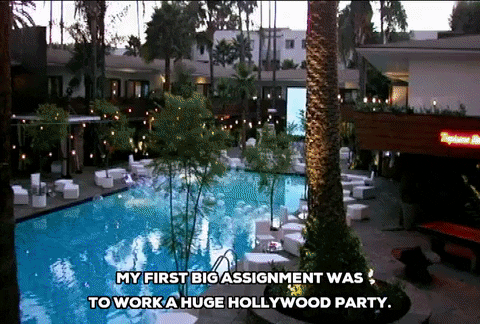
Everybody Loves Memes, But Can You Get Paid to Make Them?
The global meme industry is projected to reach $6.1 billion by 2025.
Meme creators speak out about how to get started as a “memer” and the best strategies for getting paid for your work.
In 2021, Instagram posted a "Year in Review" blog showing its users share at least one million meme posts daily. Additionally, YPulse reports that 75% of users ages 13 to 36 share memes regularly, with many users sending them once or more per day.
Memes are more popular than ever, and there's no sign of this popularity waning. The global meme industry was valued at $2.3 billion in 2020 and is projected to reach $6.1 billion by 2025.
It's clear that memes can be lucrative for creators, but making money with meme accounts isn't always easy, despite how popular the content is. To help aspiring meme creators, we asked several popular creators to share content creation advice, money-making tips, the secrets to success and their unique perspectives on meme creation.
How can someone become a professional meme maker?
Anxhi Bali of @luigi.explains notes "practice makes perfect." Not everything will be a hit, but the more time you spend getting a feel for what your audience wants, the better you'll be at creating successful memes.
Dino (@dinoexplains) says that staying up-to-date with everything happening in the world is one of the best ways to become a professional meme maker, and @Sarcasm_only agrees, adding that "a good sense of humor always helps, too." Always think, "How can I use that information to entertain people?"
For example, when Will Smith slapped Chris Rock at the Oscars, that screenshot was a perfect template for creating funny memes about anything and everything. It was fresh on everyone’s minds, so it was more likely to get shared.
How do you make a meme go viral? What's the secret to gaining traction with your content?
According to the meme creators we spoke to, there's no "secret recipe" that guarantees viral content. Since what goes viral is often at the whims of the internet at large, this is unsurprising.
However, the creators do have some advice:
Dino: "The most important thing is that your meme should be relatable. That's what gets shared most often. Using popular meme templates (like “mocking Spongebob” or “Little Miss”) is another great way to make viral content."
@Uglyscumbags: "My strategy is to collaborate with pages of the same niche or similar tags that have worked well for me in the past. Sometimes though, it comes down to luck."
Bali: "I use curated sets of tags and relevant captions and look at analytics to ensure I post during peak engagement hours."
How do you actually get paid to make memes?
This is the question on everyone's mind. After all, if you can't make money, it's hard for most people to justify spending so much time on meme creation.
Monetization is hard, especially when platforms like Instagram and YouTube are constantly changing their algorithms, posting guidelines and rules for appropriate content.
These creators use platforms like Instagram, YouTube, Facebook and TikTok as ways to put their memes in front of the biggest possible audience, but they also have other strategies that include using newer platforms, such as Yepp, for faster, easier revenues. Yepp is a next-generation meme editor based on ML technologies that helps more than 1M content creators make memes and earn money on it. On the platform anyone can create a meme without specific skills, edit any text and font, or use a Face Swap algorithm that replaces a face on a meme with those of your friends. Funny content goes viral and collects hundreds of thousands of views in the feed. According to company data, Yepp's top performers currently earn between $400 and $1,200 a month, and the company is looking for more ways to increase user pay-outs.
@Sarcasm_only recommends using shout-outs, promotions and getting brand deals for more revenue streams.
@Uglyscumbags says, "For Instagram, it’s all about paid promotions, affiliate marketing and ‘sweat coin.’ I also occasionally get work creating original memes for someone else, but that’s rare.”
Dino notes that getting paid for memes isn’t always easy, but they use Instagram for promotions and external ads. “On Instagram, you need a very big audience who enjoys your memes. Even still, the only way I’ve found to make money on the platform is to post ads from external sources, which then kills your engagement and a lot of people unfollow you. So, in addition, I’m using platforms like Yepp that make it really simple to get paid for posting memes by sharing half of its revenue with their creators.”
Anxhi Bali notes that they make money just through promotions on their page.
Talk to us about ownership and control in meme creation. Are there general ethical guidelines or "unwritten rules" you follow?
The consensus is to always give credit to the original poster or template creator when using their work. This is the biggest "unwritten rule" of meme creation, and it helps everybody get more recognition.
According to Anxhi Bali and Dino, it's also essential to consider your audience and posting platform. Bali notes that "platforms have gotten super sensitive about whether or not a meme is crossing boundaries or potentially offensive," which means creators must be extra careful about the content they post.
Dino agrees, adding that creators should "keep the majority of their audience in mind when making memes. Make sure your main audience will enjoy the category of the meme you're posting (e.g., a lot of people don't like "dark humor"), and be sure to follow the platform's posting guidelines carefully."
Finally, what do you think social platforms need to change to help creators make money with their content? Where are people in the content creation industry falling behind?
Bali and Dino all agree that companies and platforms are really dropping the ball when it comes to listening to what creators and users actually want. Bali notes that "creators often get stepped on by platforms and usually get little or nothing in return from the platforms for the audiences and communities they build."
Dino says, "There's a huge gap between memers and platforms. Creators' voices are largely ignored, and there's no way for users to give feedback that the companies will act on."
@Sarcasm_only speaks from personal experience, saying, "Agencies and companies need to provide better ways for users to directly interact with brands because it's common to see meme pages that aren't getting paid well. This happened to me on both Instagram and YouTube, despite my follower count and engagement levels."
There's Still Lots of Room For New Meme Creators to Get Paid
Meme creation will continue to be a massive business for the foreseeable future, and the market is nowhere near saturated. This means there are plenty of opportunities for aspiring creators to get in on the game and learn how to make money from their meme content.
The creators we spoke to have seen success with brand partnership deals, promotional content, ads, affiliate marketing, shout-outs and leveraging apps to add as many revenue streams to their gigs as possible. If platforms start taking meme creators' feedback more seriously, there are endless money-making possibilities for a good meme.











